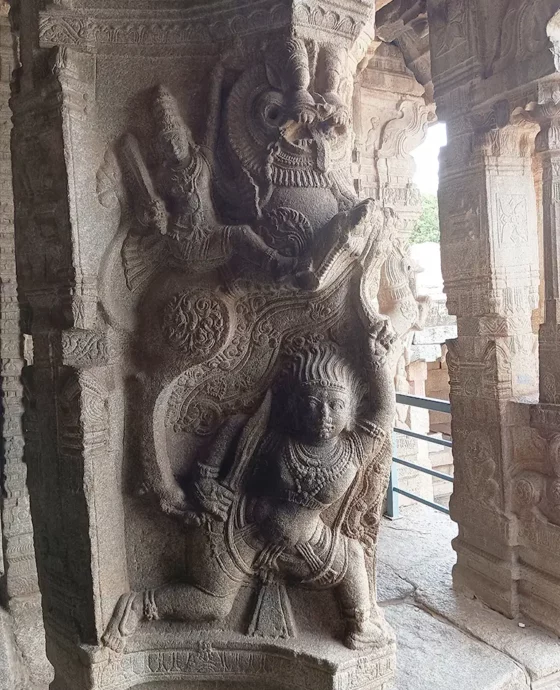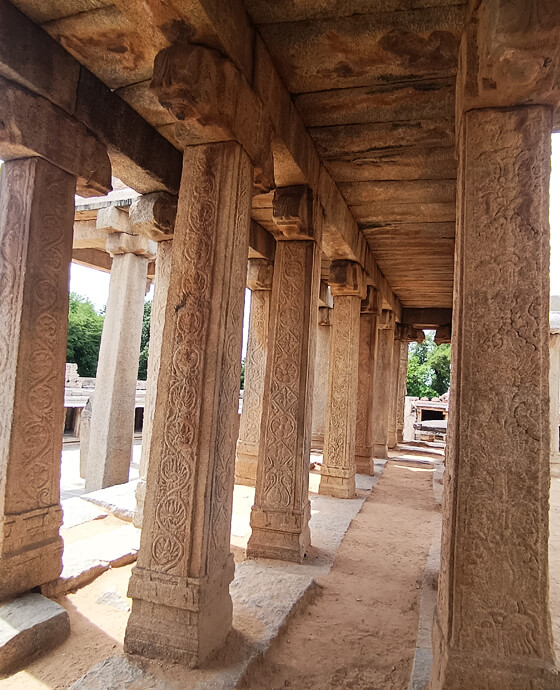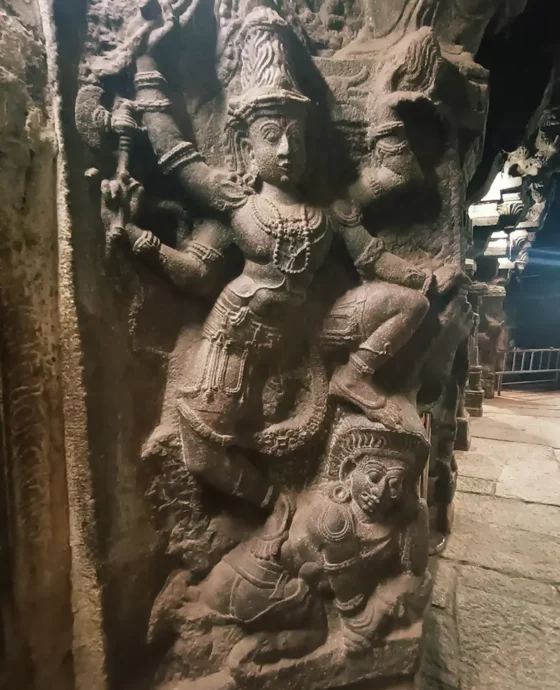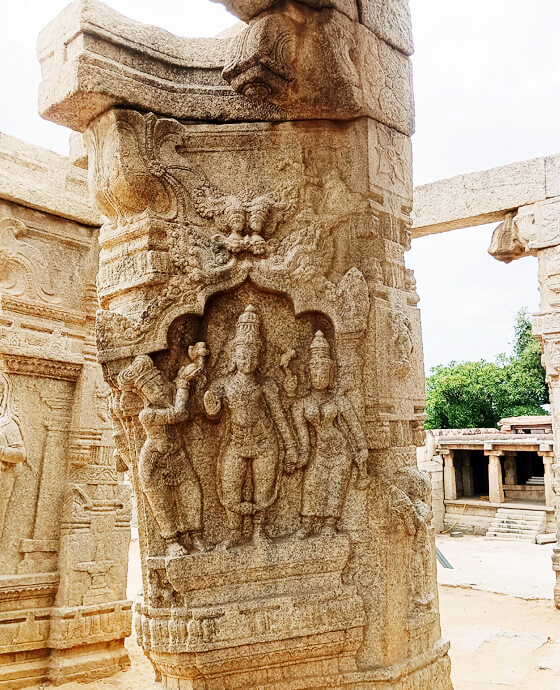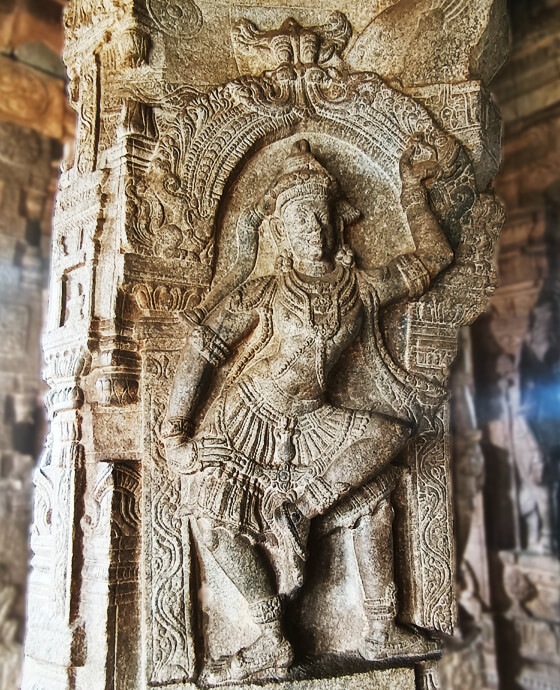Divine Footprint
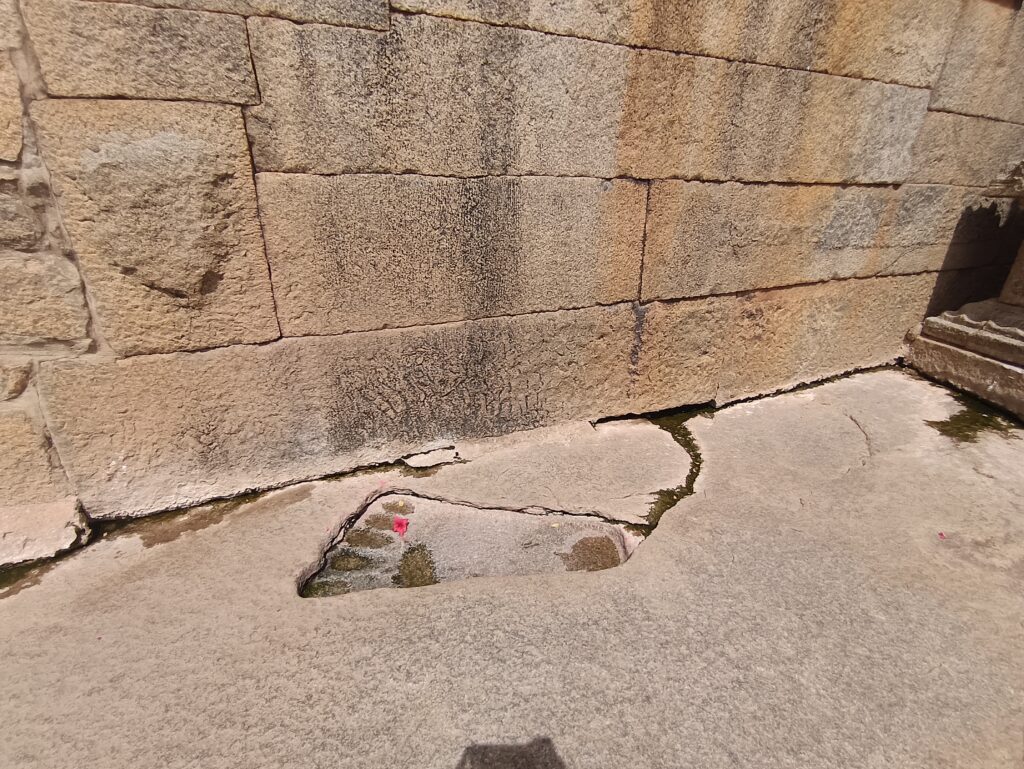
Divine Foot Print of Sita
In front of Uyala Mantapa, Sita Devi’s foot is there. During the wilderness, Ravana abducted Sita and Jatayu bird that came in the way and Ravana fought on this hill. It is known that Jatayu, whose wings were severed, drew water from the place where Sita put her foot on the hill and drank it and drank it to stay alive until Rama came and told the information and got salvation. Even in summer season water can be seen standing in the big toe area of this foot.
Sita Pada at Lepakshi Temple is a symbol of devotion, heroism, and mythology. It holds immense cultural, spiritual, and historical significance, attracting devotees and tourists alike to experience its unique charm.
Virupanna Eyes
The story goes that while the construction of the temple was in progress, a large sum of money was allocated for the project. Virupanna, who was in charge of the treasury, was accused of misappropriating some of the funds for the temple’s construction. King Achyuta Raya, upon hearing these allegations, ordered an investigation into the matter. In an attempt to prove his innocence and the proper utilization of the funds, Virupanna invited the king to inspect the temple himself.
Virupanna was confident that the temple was built entirely with the allocated funds, and he didn’t misuse any of it. To demonstrate this, he reportedly used a technique where he could momentarily remove his finger from a crucial part of the temple’s construction to show that there was no hidden treasure or misused funds.
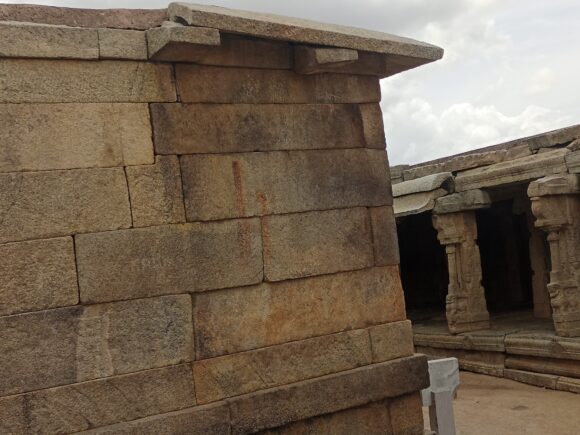
The critical moment came when Virupanna demonstrated this technique near a sculpture of Lord Ganesha, carving the eye of the deity. However, as he removed his finger, it caused damage to the sculpture’s eye. Unfortunately for Virupanna, the king misunderstood this act and concluded that Virupanna had indeed misused the temple funds for personal gain.As a result of this misunderstanding, Virupanna was punished severely. He faced the wrath of the king, who ordered that both of Virupanna’s eyes be blinded as punishment for his alleged misdeeds.
The damaged eye of the Ganesha sculpture in Lepakshi Temple, which was carved by Virupanna himself, serves as a poignant reminder of this tragic incident. The temple and its sculptures, including the Ganesha statue, remain a testament to the exquisite craftsmanship of the Vijayanagara period and the intriguing history associated with it.
Today, the Lepakshi Temple is a popular tourist destination and a significant archaeological and cultural site, attracting visitors with its historical and architectural significance, as well as its captivating mythological stories like the one involving Lord Ganesha.
Stone Carving Plates
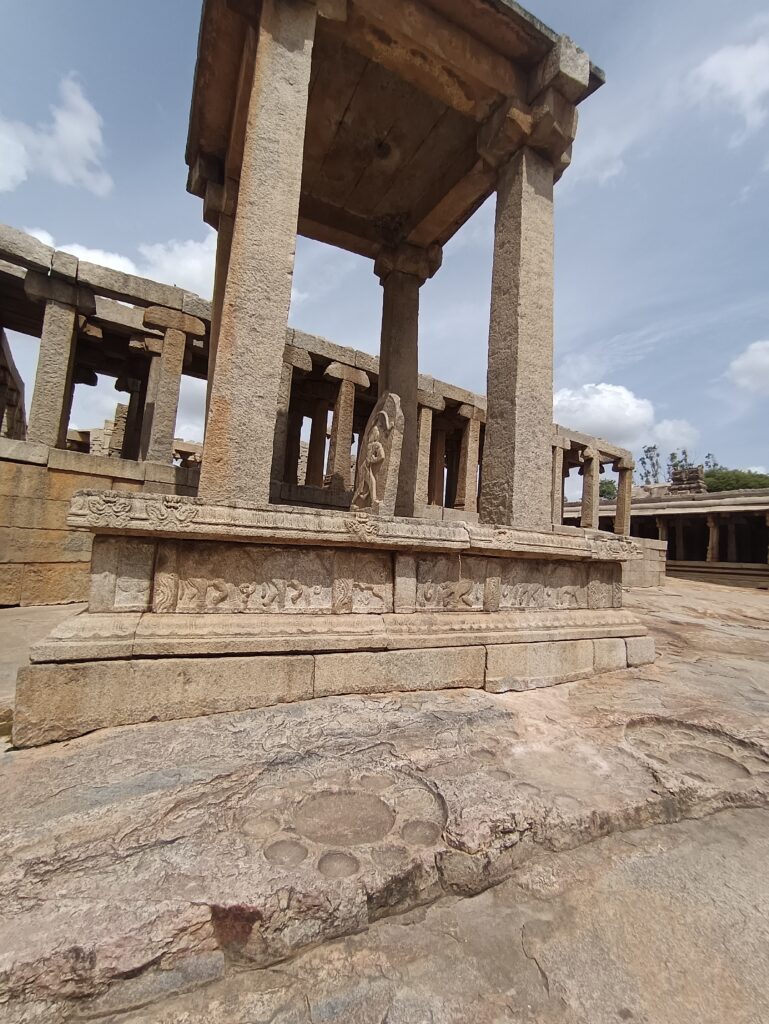
Next to the Hanuma Mandapa there are large dining plates carved in the rocks and it is estimated that the laborers used to eat them with soup in the middle and copper lumps around them. However, the buffet plates that we use now are known to have been used back then.
Stone carving plates in Lepakshi help preserve the cultural traditions and architectural styles of the past. These carvings often reflect the architectural and artistic styles of the Vijayanagara Empire, which ruled the region in the 16th century.
Many of the stone carving plates in Lepakshi depict scenes from Hindu mythology, including gods, goddesses, and epic narratives.
Hanuma Mandapa
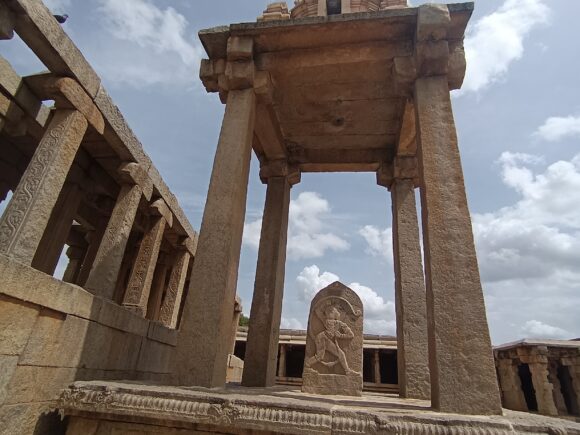
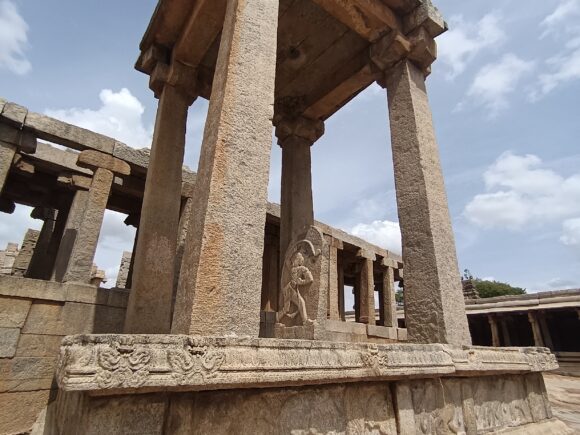
Special religious and cultural events are organized at the Lepakshi Veerabhadra Temple complex throughout the year, including on Hanuman Jayanti (the birthday of Lord Hanuman) and other important Hindu festivals.


